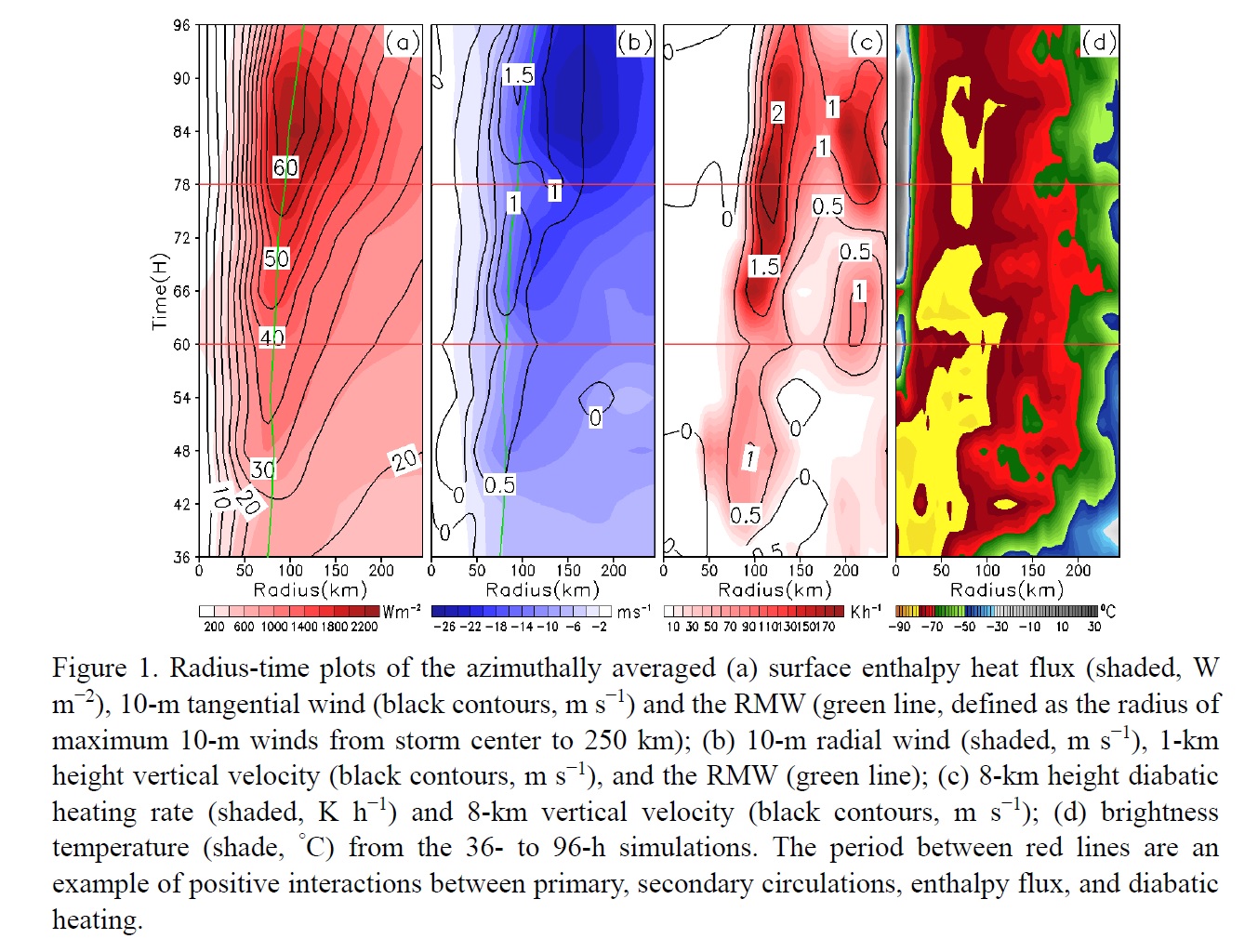Graphical Abstract
Jin, H., Y. Jin, and J. D. Doyle, 2019: An evaluation of COAMPS-TC real-time forecasts for Super Typhoon Nepartak (2016). J. Meteor. Soc. Japan, 97, 191-203.
Special Edition on Tropical Cyclones in 2015–2016
https://doi.org/10.2151/jmsj.2019-011
Graphical Abstract with highlights
Plain Language Summary: Typhoon Nepartak was a category 5 tropical cyclone of 2016 and had significant societal impacts. It went through a rapid intensification (RI), with an increase of maximum wind speed of 51 m s−1 and a decrease of minimum sea level pressure of 74 hPa in 42 h. The real-time forecast from the Coupled Ocean/Atmosphere Mesoscale Prediction System – Tropical Cyclone (COAMPS-TC), starting from 1200 UTC 3 July, predicted the track and intensity reasonably well for Super Typhoon Nepartak and captured the storm’s RI process.
Highlights:
- Positive interactions among primary and secondary circulations, surface enthalpy fluxes, and mid-level convective heating are demonstrated to be critical for the RI.
- The storm structure variations seen from the simulated satellite infrared brightness temperature during RI bear considerable resemblance to the Himawari-8 satellite images, although the forecast inner core is too broad, presumably due to the relatively coarse resolution (5 km) used for the real-time forecasts at the time.







